- Travel on Sado Island Model Course Guide
- Sado Shichifukujin Ancient Temple Pilgrimage
Sado Seven Lucky Gods Ancient Temple Pilgrimage
-
Departure

An ancient temple tucked away in the back of the Shukunegi village, Shokoji Temple was founded in 1349 as the first Jishu School temple in Sado. On the Sanmon main gate, there still remains a munefuda [an inscription related to the building
-
Approximately 15 minutes by carDestination B
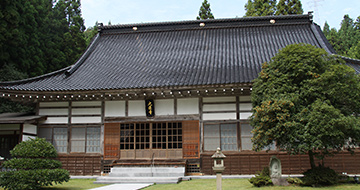
Dairenji Temple is a temple of the Soto Zen school of Buddhism established in 1421 as a temple to take care of ancestors of the Honma clan, Lords of Hamochi Castle. The sanmon main gate is the east gate of the castle (Niigata Prefecture's Historic Site), which survived destruction in a siege by Kagekatsu Uesugi (lord of Echigo), and was later relocated. This temple served as accommodations for successive Deputies for Sado and officials in the Edo Period (1603-1867). Within the precinct, there are the 500 Arhats Hall, created by a sculptor of Buddha statues in the Edo Period; Kannondo Hall, enshrining a secret Buddhist icon, Maria-Kannon (Mary statue in Kannon disguise); and Hotei (god of good fortune) Hall worshipped for wealth and happiness. Mahori Hogan Yoshitaka, a master painter, donated his painting, entitled "Amazawa Hoteison." Dairenji Temple is one of the temples on Sado's Seven Gods of Fortune pilgrimage route. Referred to as a temple of camellia flowers, Dairenji Temple is familiar to locals,
-
Approximately 22 minutes by carDestination C
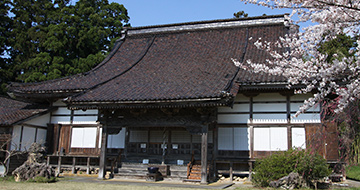
A walk up the gentle slope, with Akadomari Port in the background, will lead to Zenchoji Temple on the heights, a temple of the Shingon School. It was reputedly founded circa 827. Once every thirty-three years, the main image of the temple, the Shokanzeonbosatsu (Aryavalokitesvara) statue is revealed, which is a lost-wax casting work of the first generation of Rando Miyata. Zenchoji is known as the temporary residence of Tamekane Kyogoku (a court noble) for six years, and in connection with his long-aspired return to Kyoto in 1303, the hidden statue at the upper temple has been worshipped in the name of Kikyo ("coming-home") Kannon. In addition, Mahori Hogan Yoshitaka, a master painter, donated a painting entitled "Kyogoku Bishamonten (Vessavaṇa)". Zenchoji Temple is one of the temples on Sado's Seven Gods of Fortune pilgrimage route. Bishamonten is a god with wisdom and valor, as well as, a god of treasure and happiness, and has been steadfastly worshipped to this day.
-
Approximately 15 minutes by carDestination D
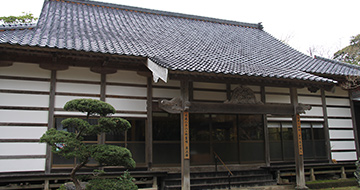
The historic old temple of Shingon School welcomes you with brilliant sculptures. It is said that the temple was established by Kuzan, a Buddhist monk, in 808, and the main object of worship is a1,000-armed Kannon Bosatsu (Guanyin: Goddes of Mercy). Seen on the sculpture of Sanmon Gate, Ebisu is the god of driving evil spirits away and bringing luck in. It has been greatly worshipped as a god of fishing and safety at sea to this day. The hall enshrining Konpira Gongen, a god of sailors, was founded in 1833 by Jinzaemon Takano, a master carpenter in the Murayama area. You will be overwhelmed by the sculpture, which richly embellishes the hall. Mahori Hogan Yoshitaka, a master artist, donated his painting entitled "Kurasaki Ebisuten" to this temple.
-
Approximately 18 minutes by carDestination E
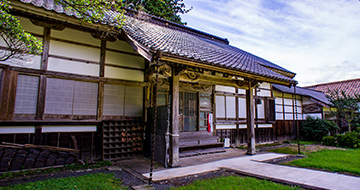
Sesonji Temple houses a lovely green garden on its ancient grounds. Six temple buildings, including the main hall, are designated as Japan's Tangible Cultural Properties. Morikuni Endo, who was a member of Emperor Juntoku's troop and accompanied to Sado along with Emperor Juntoku, encountered Nichiren (founder of Nichiren School of Buddhism, exiled to Sado) and became a fervent follower of him. Sesonji Temple is a meditation hall established with Nikko, a leading disciple of Nichiren, as the head of the temple. The temple houses a mandala drawn by Nichiren Shonin, and also a drawing of Daikokuten (god of wealth) which Nichiren drew at the beach of Shibute (Mano) at the time of his departure from Sado after being pardoned. Mahori Hogan Yoshitaka, a master painter, donated a painting entitled Shibuya Daikokuten. Sesonji Temple is one of the temples on Sado's Seven Gods of Fortune pilgrimage route. Sesonji Temple is also known for its beautiful azalea.
-
Approximately 5 minutes by carDestination F
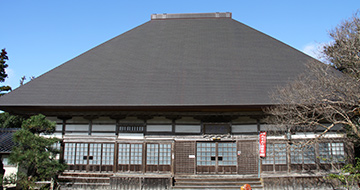
Keikuji Temple is a temple of the Shingon School (founded in 807) with Dainichi Nyorai (Mahavairocana: supreme Buddha of the Cosmos) as the main object of worship. The name of the temple "Keikuji (written as 慶宮 in Japanese) derives from the lore that Emperor Juntoku's eldest daughter, Princess Keishi (慶子), spent her life here. The Princess worshipped Fukurokuju Sonten (God of Longevity), so a master artist, Mahori Hogan Yoshitaka, donated a painting entitled "Jingo (divine protection) Fukurokuju". Keikuji Temple is one of the temples on Sado's Seven Gods of Fortune pilgrimage route. Hasso (eight patriarchs) Hall, equipped with an octagonal shrine with a rotational system, is one of a Niigata Prefecture's Tangible Cultural Assets.
-
Approximately 11 minute by carGoal!
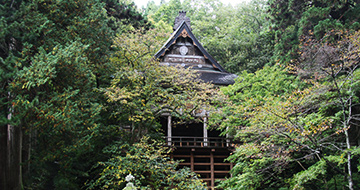
Under Emperor Kanmu's ordinance, Seisuiji Temple was founded in 808 by Ken'o Hoshi, a Buddhist monk who came from Kyoto on a missionary tour. There is Guzeden (literally: salvation) Hall, imitating the wooden stage at KiyomizuderaTemple (written in the same characters as Seisuiji: 清水寺 in Japanese) in Kyoto, but the main object of worship is 1,000-armed Kannon Bosatsu (Guanyin: Goddes of Mercy), also in imitation of Kiyomizudera Temple. Enmeizenzaijurosonten (the god of longevity) is worshipped at this temple, too, and a painting called, "Zenzaijurojin," by Mahori Hogan Yoshitaka, a master artist, was donated. Seisuiji Temple is one of the temples on Sado's Seven Gods of Fortune pilgrimage route.